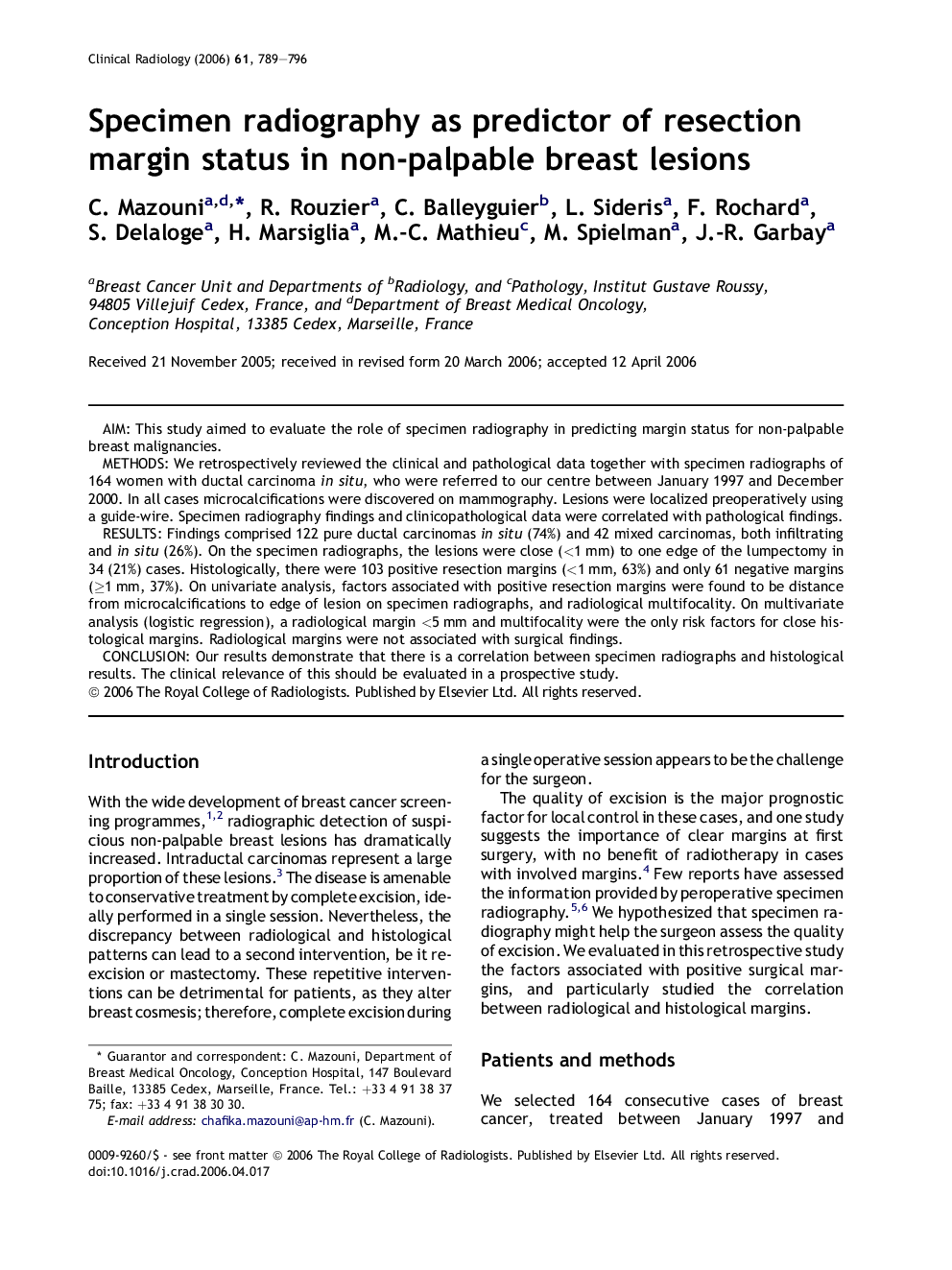| Article ID | Journal | Published Year | Pages | File Type |
|---|---|---|---|---|
| 3983657 | Clinical Radiology | 2006 | 8 Pages |
AimThis study aimed to evaluate the role of specimen radiography in predicting margin status for non-palpable breast malignancies.MethodsWe retrospectively reviewed the clinical and pathological data together with specimen radiographs of 164 women with ductal carcinoma in situ, who were referred to our centre between January 1997 and December 2000. In all cases microcalcifications were discovered on mammography. Lesions were localized preoperatively using a guide-wire. Specimen radiography findings and clinicopathological data were correlated with pathological findings.ResultsFindings comprised 122 pure ductal carcinomas in situ (74%) and 42 mixed carcinomas, both infiltrating and in situ (26%). On the specimen radiographs, the lesions were close (<1 mm) to one edge of the lumpectomy in 34 (21%) cases. Histologically, there were 103 positive resection margins (<1 mm, 63%) and only 61 negative margins (≥1 mm, 37%). On univariate analysis, factors associated with positive resection margins were found to be distance from microcalcifications to edge of lesion on specimen radiographs, and radiological multifocality. On multivariate analysis (logistic regression), a radiological margin <5 mm and multifocality were the only risk factors for close histological margins. Radiological margins were not associated with surgical findings.ConclusionOur results demonstrate that there is a correlation between specimen radiographs and histological results. The clinical relevance of this should be evaluated in a prospective study.
